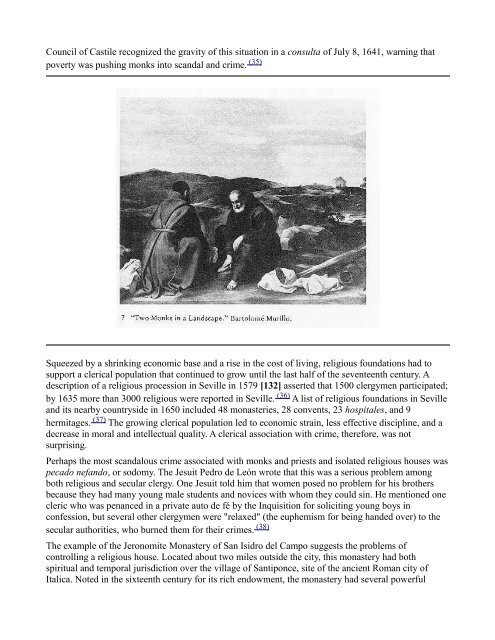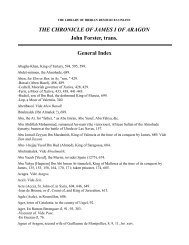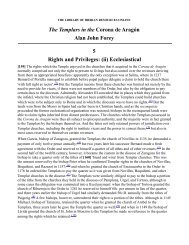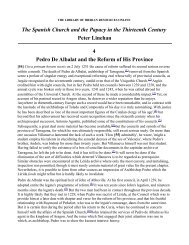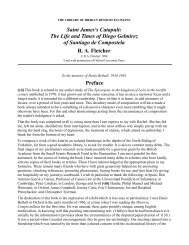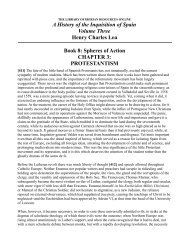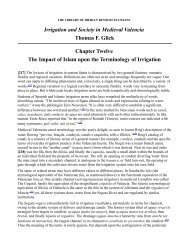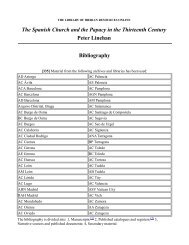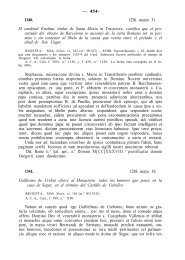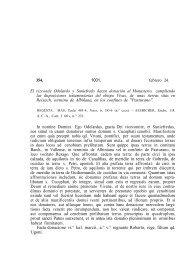Chapter 6 - The Library of Iberian Resources Online
Chapter 6 - The Library of Iberian Resources Online
Chapter 6 - The Library of Iberian Resources Online
Create successful ePaper yourself
Turn your PDF publications into a flip-book with our unique Google optimized e-Paper software.
Council <strong>of</strong> Castile recognized the gravity <strong>of</strong> this situation in a consulta <strong>of</strong> July 8, 1641, warning that<br />
poverty was pushing monks into scandal and crime. (35)<br />
Squeezed by a shrinking economic base and a rise in the cost <strong>of</strong> living, religious foundations had to<br />
support a clerical population that continued to grow until the last half <strong>of</strong> the seventeenth century. A<br />
description <strong>of</strong> a religious procession in Seville in 1579 [132] asserted that 1500 clergymen participated;<br />
by 1635 more than 3000 religious were reported in Seville. (36) A list <strong>of</strong> religious foundations in Seville<br />
and its nearby countryside in 1650 included 48 monasteries, 28 convents, 23 hospitales, and 9<br />
hermitages. (37) <strong>The</strong> growing clerical population led to economic strain, less effective discipline, and a<br />
decrease in moral and intellectual quality. A clerical association with crime, therefore, was not<br />
surprising.<br />
Perhaps the most scandalous crime associated with monks and priests and isolated religious houses was<br />
pecado nefando, or sodomy. <strong>The</strong> Jesuit Pedro de León wrote that this was a serious problem among<br />
both religious and secular clergy. One Jesuit told him that women posed no problem for his brothers<br />
because they had many young male students and novices with whom they could sin. He mentioned one<br />
cleric who was penanced in a private auto de fé by the Inquisition for soliciting young boys in<br />
confession, but several other clergymen were "relaxed" (the euphemism for being handed over) to the<br />
secular authorities, who burned them for their crimes. (38)<br />
<strong>The</strong> example <strong>of</strong> the Jeronomite Monastery <strong>of</strong> San Isidro del Campo suggests the problems <strong>of</strong><br />
controlling a religious house. Located about two miles outside the city, this monastery had both<br />
spiritual and temporal jurisdiction over the village <strong>of</strong> Santiponce, site <strong>of</strong> the ancient Roman city <strong>of</strong><br />
Italica. Noted in the sixteenth century for its rich endowment, the monastery had several powerful


